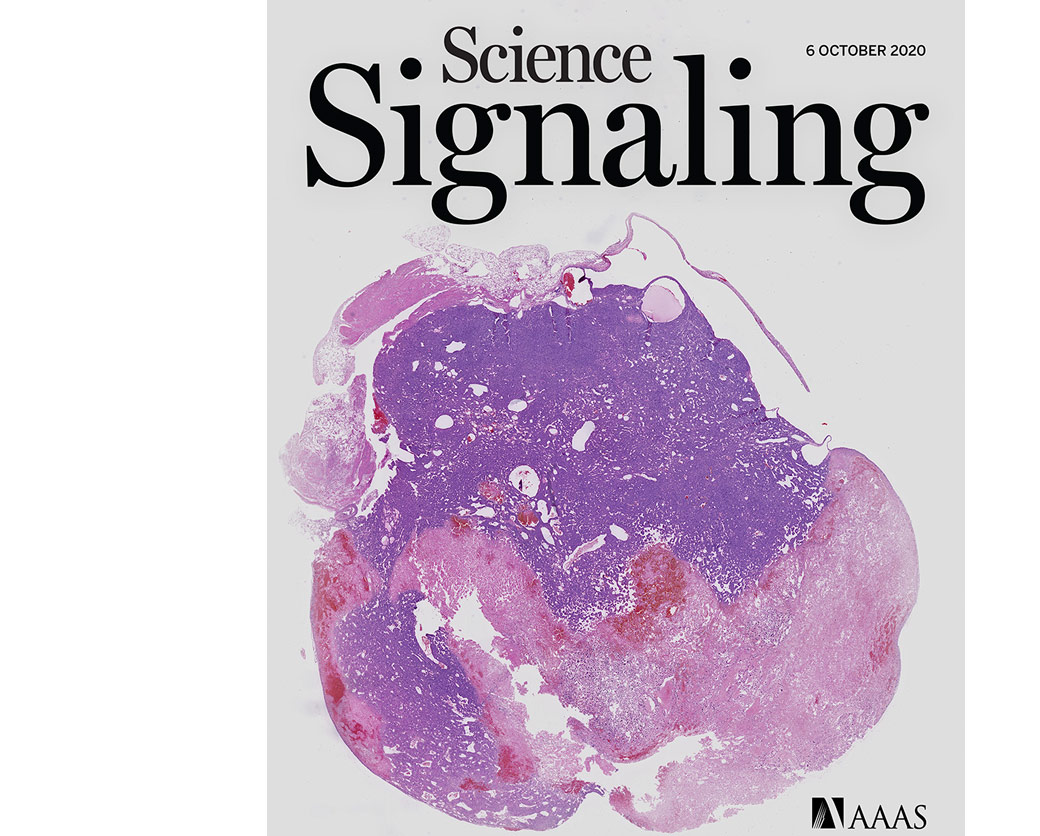 Li is an Intramural Research Training Award fellow in DeMayo’s group. (Photo courtesy of Steve McCaw)
Li is an Intramural Research Training Award fellow in DeMayo’s group. (Photo courtesy of Steve McCaw)Although the U.S. death rate due to ovarian cancer has steadily declined since 1992, the disease still poses a considerable health risk to women, according to the National Cancer Institute. With that knowledge informing their work, NIEHS researchers may have determined what is driving the development of ovarian cancer in mice and humans.
Rong Li, Ph.D., of the NIEHS Pregnancy and Female Reproduction Group, and Margeaux Wetendorf, Ph.D., a former member of the lab, found that the hormonal receptor known as progesterone receptor B (PGRB) plays a major role in the growth of ovarian tumors. The two scientists shared first co-authorship on a paper published online Oct. 6 in the journal Science Signaling (see sidebar).
Francesco DeMayo, Ph.D., who leads the research group, said that he and his team compared the gene expression pattern of these mouse ovarian tumors with human ovarian tumors. Although the involvement of PGRB was unexpected, he was more excited about what it meant for treatment.
'We’ve identified the gene signature that clinicians can examine to see whether it is a potential therapy diagnosis for these cancers,' DeMayo said.
Mimicking human cancer
DeMayo explained that progesterone, which allows an embryo to successfully implant in the uterus, has two receptors, the A form (PGRA) and PGRB. Female mice and women have both forms. In reproductive tract cancers, it has been shown that there is a difference in the abundance of one receptor compared with the other. His goal was to increase levels of either PGRA or PGRB in the mouse reproductive tract to determine whether the receptor affected embryo implantation and cancer.
 DeMayo also is chief of the NIEHS Reproductive and Developmental Biology Laboratory. (Photo courtesy of Steve McCaw)
DeMayo also is chief of the NIEHS Reproductive and Developmental Biology Laboratory. (Photo courtesy of Steve McCaw)The team found that mice overexpressing PGRA or PGRB were not able to get pregnant, and all the PGRB mice had many large tumors. Only two PGRA mice developed small tumors.
Li said the type of tumor the mice exhibited was one that researchers do not usually see in humans. Most ovarian tumors in women originate in the cells that cover the outside of the ovary and oviduct, also known as the Fallopian tube. However, these mouse tumors came from tissue inside the ovary. Although a small percentage of human ovarian tumors also originate from the inner ovary, most do not.
As part of the study, pathologists at the National Toxicology Program identified these abnormal growths in mice as granulosa cell tumors of the ovary. DeMayo and colleagues compared the molecular signature of the mouse ovarian tumors to human granulosa cell tumors.
 The data were so intriguing that the journal featured the research on its cover. The image is a micrograph of a mouse ovarian tumor. (Photo courtesy of American Association for the Advancement of Science)
The data were so intriguing that the journal featured the research on its cover. The image is a micrograph of a mouse ovarian tumor. (Photo courtesy of American Association for the Advancement of Science)They found that the two sets of tumors looked alike and that the molecular signature of the mouse tumors resembled common epithelial tumors such as human ovarian cancer. Epithelial cells line body cavities and hollow organs, as well as cover the outside surface of the body.
'The bottom line is that we’ve identified gene signatures in mouse ovarian tumors that tell us what progesterone may be doing in human hormonal cancers,' Li said.
Citation: Wetendorf M, Li R, Wu SP, Liu J, Creighton CJ, Wang T, Janardhan KS, Willson CJ, Lanz RB, Murphy BD, Lydon JP, DeMayo FJ. 2020. Constitutive expression of progesterone receptor isoforms promotes the development of hormone-dependent ovarian neoplasms. Sci Signal 13(652):eaaz9646.









